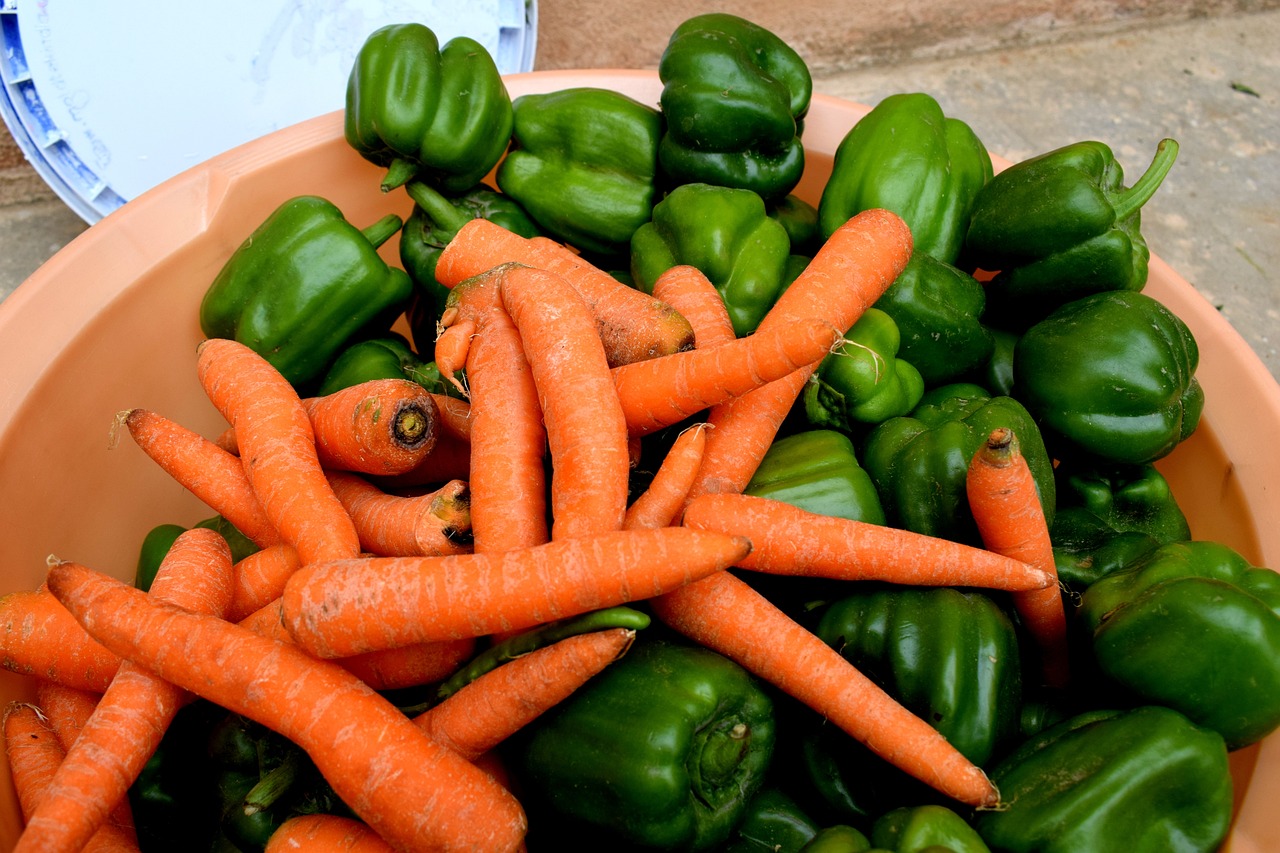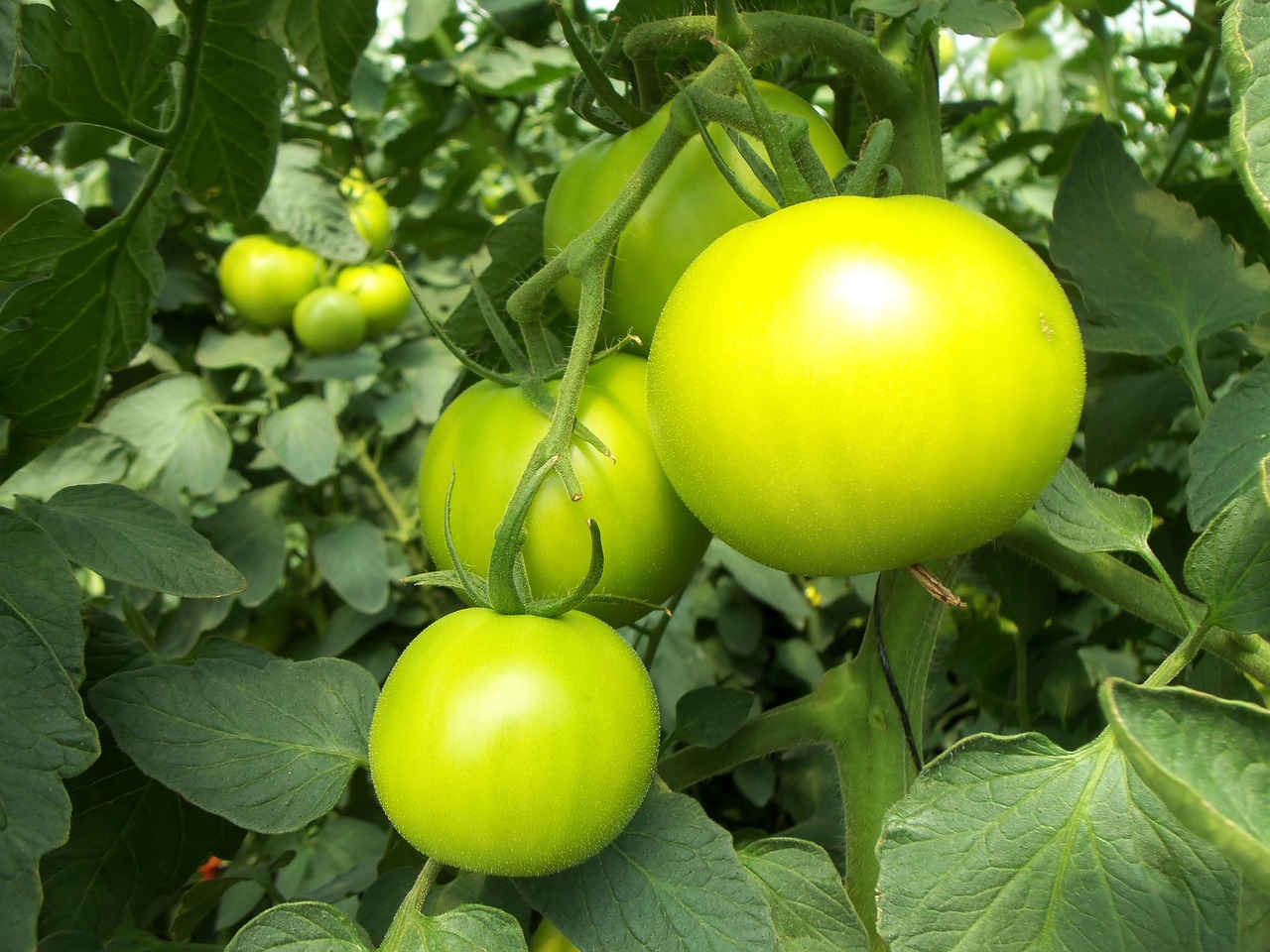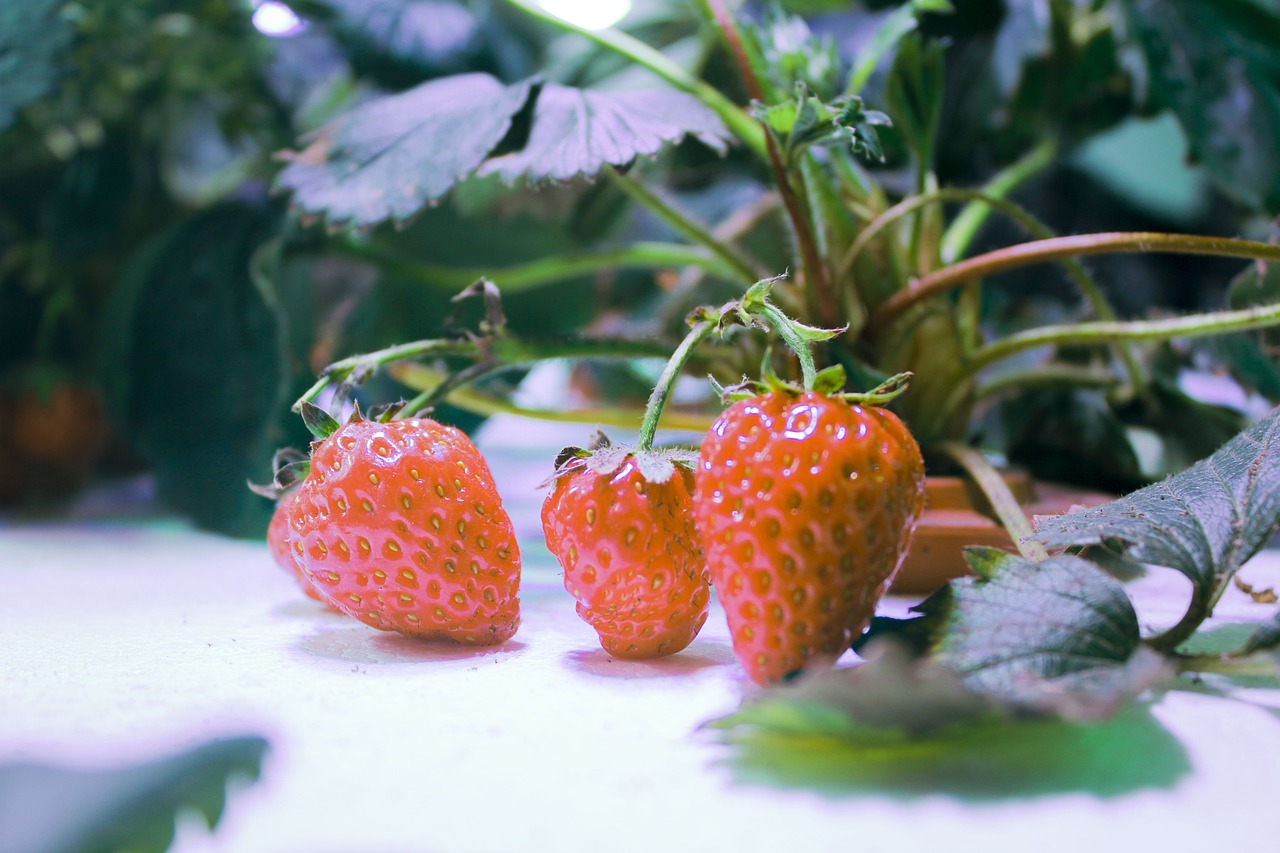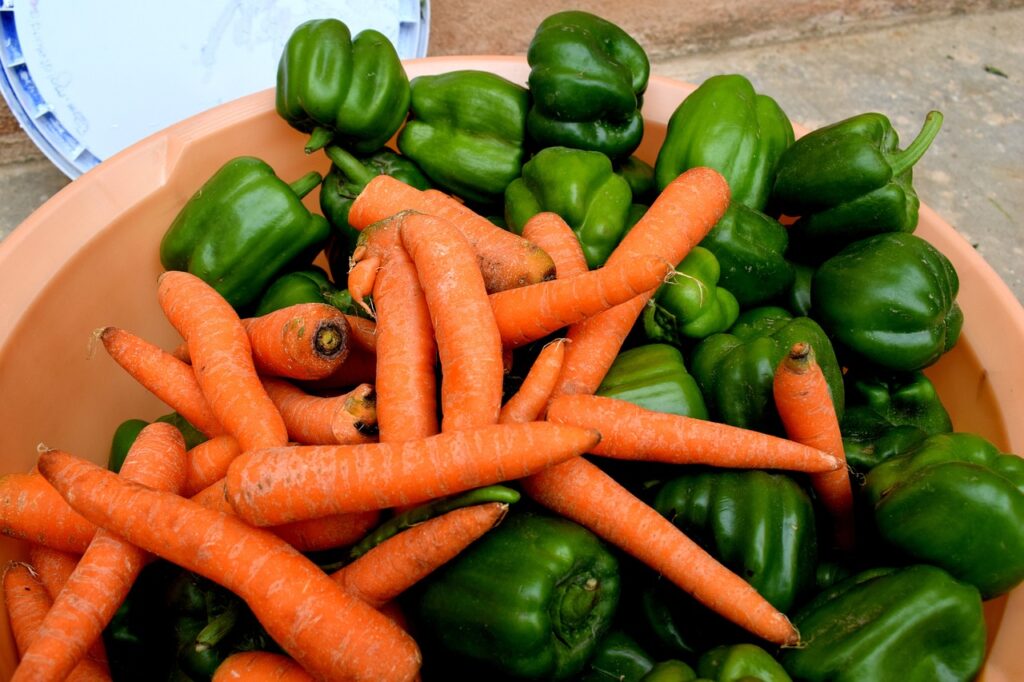So, you’ve heard about hydroponic food and you’re curious to know if it’s as healthy as traditional crops, right? Well, you’re in for an exciting read because today we’re going to explore the world of hydroponics and all its potential health benefits. From providing fresh and pesticide-free produce all year round to conserving water and reducing soil erosion, hydroponic food offers a promising alternative to conventional farming methods. But is it truly as healthy? Let’s dig deeper to find out!
Benefits of Hydroponic Food
Higher Nutritional Value
Hydroponic food has been shown to have higher nutritional value compared to traditional soil-grown produce. This is because hydroponic systems allow precise control over the nutrients that plants receive. In a hydroponic system, plants are grown in a nutrient-rich solution that provides them with all the essential minerals and elements they need for optimal growth. This means that hydroponically grown fruits and vegetables often have higher levels of vitamins and minerals compared to their soil-grown counterparts.
Reduced Chemical Exposure
One of the major benefits of hydroponic food is that it greatly reduces chemical exposure. Traditional farming methods often involve the use of pesticides and herbicides to protect crops from pests and weeds. These chemicals can have harmful effects on both human health and the environment. In hydroponic systems, however, pests and weeds are controlled through natural methods such as beneficial insects and manual removal. This means that hydroponic food is generally free from harmful chemicals, making it a safer and healthier option for consumers.
Year-Round Availability
Another advantage of hydroponic food is that it can be grown year-round, regardless of the external weather conditions. Traditional farming methods are often limited by seasonal changes and weather fluctuations. In hydroponics, plants are grown indoors in a controlled environment, allowing for consistent and uninterrupted production. This means that consumers can enjoy a wide variety of fresh produce throughout the year, regardless of the season.
Water Conservation
Hydroponic systems are significantly more water-efficient compared to conventional farming methods. Traditional agriculture typically requires large amounts of water to irrigate crops, which can put a strain on water resources, especially in arid regions. In hydroponics, water is recirculated and reused, minimizing water waste. Additionally, the plants in hydroponic systems require less water overall due to the absence of soil, which can hold excess moisture. This makes hydroponic farming a sustainable solution that helps conserve water for future generations.
Potential Concerns
Limited Nutrient Diversity
One potential concern with hydroponic food is the limited nutrient diversity compared to soil-grown crops. In traditional farming, plants obtain their nutrients from the soil, which naturally contains a wide range of essential minerals and trace elements. In hydroponics, on the other hand, the nutrient solution needs to be carefully formulated to provide all the necessary elements. While this can be achieved with careful monitoring and adjustment, it may be challenging to replicate the exact nutrient composition found in natural soil. However, the nutritional value of hydroponic food can still be optimized through proper nutrient management.
Pesticide Usage
While hydroponic systems greatly reduce the need for chemical pesticides, some growers may still use pesticides to control pests in their operations. This is particularly true for large-scale hydroponic farms that face challenges in maintaining pest-free conditions. It is essential for consumers to be aware of the pesticide practices employed by hydroponic growers and choose produce from sources that prioritize natural and organic pest control methods. By supporting responsible hydroponic farming practices, consumers can mitigate concerns related to pesticide usage.
Artificial Environment
Critics of hydroponic farming argue that the artificial environment in which the plants are grown may impact their overall health and nutritional value. They argue that plants grown in soil have a symbiotic relationship with soil microorganisms, which play a crucial role in nutrient uptake and plant health. In hydroponic systems, the absence of soil and the reliance on nutrient solutions could potentially limit the diversity of microorganisms that interact with the plants. However, ongoing research in hydroponics aims to address this concern by developing innovative solutions to enhance plant-microbe interactions and mimic soil-like conditions in hydroponic environments.
Less Flavorful
Some consumers believe that hydroponically grown produce may lack the natural flavors found in soil-grown crops. This perception may arise from the fact that soil imparts unique flavors to plants, which can be influenced by factors such as nutrient composition and microbial activity. While it is true that hydroponically grown fruits and vegetables may have slightly different flavor profiles, this does not necessarily mean they are less flavorful. Taste preferences are subjective, and many people appreciate the clean, fresh, and consistent flavors of hydroponic food. Additionally, advancements in hydroponic techniques, such as the use of specific nutrient blends, can help enhance the flavor characteristics of hydroponic produce.

Nutritional Comparison
Vitamins and Minerals
When comparing the nutritional content of hydroponic food to that of traditional soil-grown crops, studies have shown mixed results. Some studies have found no significant differences in the vitamin and mineral content between the two, while others have reported higher nutrient levels in hydroponically grown produce. It is important to note that nutritional variations can occur even among soil-grown crops, depending on factors such as soil quality and farming practices. Ultimately, the nutritional value of any food depends on various factors, including the specific crop, cultivation methods, and post-harvest handling.
Protein Content
Protein content in hydroponic food is generally comparable to that of conventionally grown crops. Protein is primarily derived from amino acids, and plants can synthesize all the essential amino acids they need for protein formation. In hydroponic systems, the availability and balance of amino acids can be carefully controlled through proper nutrient management. As long as the plants receive the necessary nitrogen and nutrient supply, they can produce proteins at levels comparable to those found in soil-grown crops.
Antioxidant Levels
Antioxidants are compounds that help protect the body against damage caused by harmful free radicals. Hydroponic fruits and vegetables have been found to contain comparable or even higher levels of antioxidants compared to their soil-grown counterparts. The controlled environment in hydroponic systems allows for optimal growth conditions, which can promote the synthesis of antioxidants. Furthermore, by reducing chemical exposure, hydroponic farming can mitigate the oxidative stress that crops may face in conventional agriculture, leading to higher antioxidant levels in the produce.
Safety and Regulation
Strict Quality Control
Hydroponic farming systems prioritize strict quality control measures to ensure the safety and quality of the produce. As hydroponic systems are typically enclosed and controlled, the risk of external contaminants, such as soil-borne pathogens, is significantly reduced. Growers can closely monitor and control factors such as nutrient levels, pH balance, and temperature, which helps minimize the risk of crop contamination. This focus on quality control enables hydroponic farms to consistently produce safe and high-quality food for consumers.
Food Safety Standards
Hydroponic farms are subject to the same food safety regulations and standards as traditional farms. These regulations ensure that hydroponic food is grown, harvested, and handled using safe practices that minimize the risk of foodborne illnesses. In many countries, hydroponic farms are required to follow strict guidelines when it comes to water quality, sanitation, and handling practices. This ensures that consumers can have confidence in the safety of hydroponic food and trust that it meets the same rigorous standards as other commercially available produce.

Environmental Impact
Reduced Use of Land
Hydroponic farming can help reduce the need for expansive land areas typically required for traditional agriculture. Traditional farming methods often involve large-scale land clearance, which can lead to deforestation and habitat destruction. In contrast, hydroponic systems can be set up vertically or in compact indoor spaces, maximizing land efficiency. By utilizing vertical space or repurposing urban areas, hydroponic farms can produce significant quantities of food while minimizing the land footprint. This land-saving potential makes hydroponics a promising solution for sustainable food production, particularly in densely populated regions where available land is limited.
Water Efficiency
Water scarcity is a global concern, and traditional farming methods often require vast amounts of water for irrigation. Hydroponic systems offer a more water-efficient alternative. By recirculating and reusing water, hydroponic farms can significantly reduce water consumption compared to traditional agriculture. Additionally, the absence of soil in hydroponic systems eliminates water loss through leaching and deep percolation. The water-saving potential of hydroponics makes it an environmentally friendly approach to farming, particularly in water-stressed areas or regions where water conservation is a priority.
Food Waste Reduction
Shorter Supply Chains
Hydroponic food production offers the advantage of shorter supply chains, reducing the time and distance between the farm and the consumer. Traditional agricultural practices often involve long transportation routes and multiple intermediaries, resulting in longer storage times and increased potential for food spoilage. In hydroponics, the controlled environment allows for year-round production in close proximity to urban centers. This shorter supply chain means that hydroponic produce can reach consumers faster, resulting in fresher and longer-lasting food with reduced waste.
Faster Growth Cycles
Hydroponic plants often have faster growth cycles compared to soil-grown crops. The controlled environment in hydroponic systems provides optimal conditions for plant growth, such as consistent light, temperature, and nutrient supply. This allows plants to grow more efficiently and reach maturity faster. The shorter growth cycles mean that hydroponic farmers can produce multiple crops in a year, increasing overall productivity. Additionally, faster growth cycles can help reduce the risk of crop losses due to adverse weather conditions or diseases, further contributing to food waste reduction.

Cost Considerations
Initial Investment
Setting up a hydroponic farm requires an initial investment in infrastructure and equipment. Hydroponic systems can be complex and may involve the installation of specialized lighting, climate control systems, and nutrient delivery systems. The cost of these initial investments can vary depending on factors such as farm size, desired production capacity, and technology used. However, as hydroponics continues to gain popularity and technological advancements become more accessible, the cost of entry into hydroponic farming is gradually becoming more affordable.
Maintenance Costs
In addition to the initial investment, hydroponic farms incur ongoing maintenance costs. These costs include energy consumption for lighting and climate control, as well as regular maintenance of equipment and systems. Proper monitoring of nutrient levels, pH balance, and water quality is vital to ensure optimal plant growth and nutrient absorption. While maintenance costs are essential, they can be offset by the increased productivity and potential savings in water usage and land requirements. As the industry matures and economies of scale come into play, it is expected that the overall cost of hydroponic farming will continue to decrease.
Consumer Perception
Preference for Natural Farming
Some consumers have a preference for food that is grown using natural farming methods, such as organic or regenerative agriculture. This preference stems from the belief that natural farming practices are more sustainable and preserve the integrity of the natural ecosystem. While hydroponics may not fall under the traditional definition of “natural farming,” it is important to consider the broader context of sustainable food production. Hydroponic farming can offer significant environmental benefits, such as reduced use of land and water, which align with the goals of sustainability. It is crucial to educate consumers about the various farming methods available and their respective benefits to foster an informed understanding of hydroponics.
Perceived Safety Concerns
Due to misconceptions and misinformation, some consumers may have safety concerns regarding hydroponic food. These concerns may be related to the use of nutrient solutions, potential chemical residues, or the lack of soil in the cultivation process. It is essential for hydroponic farmers to address these concerns transparently and provide consumers with accurate information about their farming practices. By emphasizing the strict quality control measures and adherence to food safety standards, hydroponic farmers can build consumer trust and confidence in the safety of hydroponic food.

Future of Hydroponic Food
Technological Advancements
The future of hydroponic food holds great promise with ongoing technological advancements. Innovations in intelligent systems, sensor technology, and automation are making hydroponic farming more efficient and easier to manage. For instance, data-driven farming techniques can optimize nutrient delivery, lighting schedules, and climate control to enhance plant growth and quality. Additionally, advancements in vertical farming systems and the integration of artificial intelligence can further improve resource efficiency and productivity in hydroponics. These technological developments will likely drive the expansion and evolution of hydroponic farming in the future.
Integration with Traditional Agriculture
The future of hydroponic food does not necessarily entail a complete replacement of traditional agriculture but rather an integration of different farming methods. Hybrid farming systems that combine hydroponics with soil-based cultivation can offer the best of both worlds. Such systems can leverage the benefits of hydroponic farming, such as precise nutrient control and year-round production, while also harnessing the benefits of natural soil fertility. By integrating hydroponics with traditional agriculture, farmers can optimize resource usage, enhance sustainability, and meet the growing demand for diverse and nutritious food.
Conclusion
When considering the benefits and concerns surrounding hydroponic food, it is important to evaluate them in the context of personal preferences and priorities. Hydroponic farming offers numerous advantages, including higher nutritional value, reduced chemical exposure, year-round availability, water conservation, and reduced land usage. However, it also faces potential concerns related to limited nutrient diversity, pesticide usage, artificial environment, and perceived flavor differences. In terms of nutrition, hydroponic food can be comparable to or even have higher levels of vitamins, minerals, protein, and antioxidants compared to soil-grown crops. Strict quality control and adherence to food safety standards ensure the safety and quality of hydroponic food. From an environmental standpoint, hydroponics reduces the use of land and is water-efficient. Shorter supply chains and faster growth cycles contribute to food waste reduction. While there are cost considerations associated with the initial investment and ongoing maintenance, the industry is becoming more accessible and cost-effective. Consumer perception may vary, with preferences for natural farming and concerns related to perceived safety. The future of hydroponic food holds promise through technological advancements and the integration of hydroponics with traditional agriculture. Ultimately, the decision to consume hydroponic food depends on personal preferences and needs, as it offers a viable and sustainable option for food production in a world with evolving agricultural challenges.



